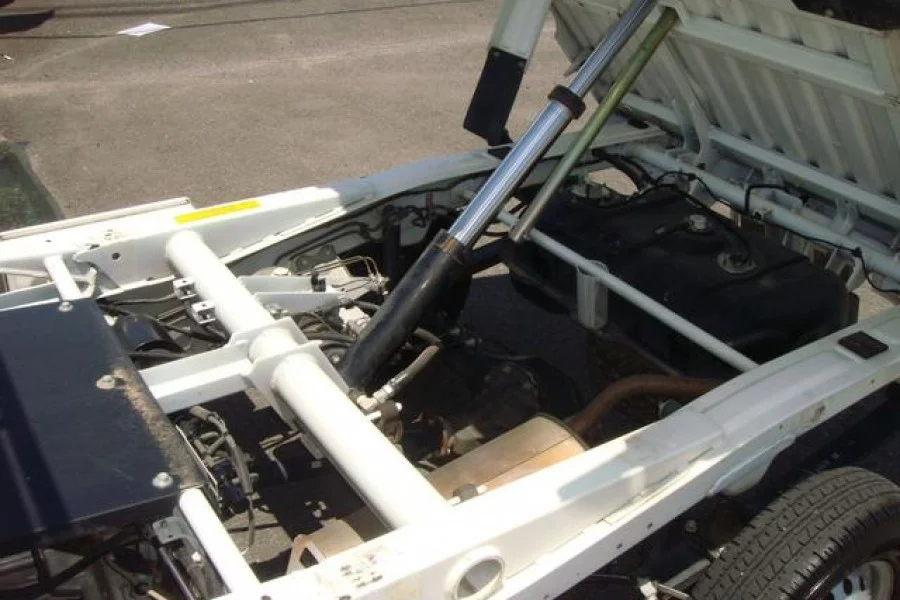Unveiling the Honda Acty Gearbox: A Comprehensive Guide
When it comes to compact utility vehicles, the Honda Acty has carved out its niche, offering reliability, efficiency, and versatility. At the heart of this remarkable vehicle lies a crucial component that often goes unnoticed but plays a vital role in its performance—the gearbox. In this comprehensive guide, we’ll delve into the intricacies of the Honda Acty gearbox, uncovering everything you need to know about its design, functionality, maintenance, and more.
Understanding the Gearbox Basics
The gearbox, also known as the transmission, serves as the bridge between the engine and the wheels, facilitating the transfer of power and enabling the vehicle to move forward or backward. In the case of the Honda Acty, a compact and efficient gearbox design is essential to maximize the vehicle’s utility and performance.
Types of Honda Acty Gearbox
The Honda Acty is typically equipped with a manual transmission, although some models may feature an automatic transmission option. Manual transmissions provide drivers with more control over gear selection, making them popular among enthusiasts and commercial users alike. Automatic transmissions, on the other hand, offer a more convenient driving experience, especially in stop-and-go traffic.
Gear Ratio and Performance
One of the key aspects of any gearbox is its gear ratio, which determines the relationship between engine speed and wheel speed. In the Honda Acty, the gear ratio is carefully calibrated to strike a balance between performance and fuel efficiency. Lower gears provide more torque for acceleration and climbing hills, while higher gears allow for smoother cruising at higher speeds.
Honda Acty Gearbox Maintenance Tips for Longevity
To ensure the longevity and optimal performance of your Honda Acty gearbox, regular maintenance is crucial. Here are some essential tips to keep in mind:
Fluid Checks and Changes: Regularly inspecting the gearbox fluid level and quality is essential to prevent premature wear and tear. Be sure to follow the manufacturer’s recommendations for fluid type and change intervals.
Clutch Adjustment: If you notice any slippage or difficulty shifting gears, it may indicate a problem with the clutch. Adjusting the clutch mechanism can help restore smooth operation and prevent further damage to the gearbox.
Gearbox Mounts Inspection: Over time, the mounts that secure the gearbox to the vehicle chassis may degrade or become damaged. Inspecting and replacing worn mounts can help prevent excessive vibration and ensure proper gearbox alignment.
Driving Habits: Avoiding aggressive driving maneuvers such as hard acceleration or sudden stops can help reduce strain on the gearbox and prolong its lifespan.
The Future of Gearbox Technology
As automotive technology continues to evolve, so too will gearbox design and functionality. In the quest for greater fuel efficiency and performance, manufacturers are exploring alternative transmission technologies such as continuously variable transmissions (CVTs) and dual-clutch transmissions (DCTs). While these technologies offer potential benefits, traditional manual and automatic gearboxes remain a popular choice for their simplicity and reliability.
5 Common Honda Acty Gearbox Issues & Troubleshooting Tips
Here are some of the most common Honda Acty gearbox issues as well as how to fix them.

Gearbox Synchronizer Issues:
Symptoms: Difficulty shifting gears, grinding or clunking noises during gear changes.
Troubleshooting Steps:
1). Check gearbox fluid level and quality. Low or contaminated fluid can affect synchronizer function.
2). Inspect clutch system for wear or misadjustment. A worn clutch can exacerbate synchronizer issues.
3). If problem persists, consider professional diagnosis and repair, as worn synchronizers may require replacement.
Engine Misfires:
Symptoms: Rough idle, loss of power, illuminated check engine light.
Troubleshooting Steps:
1). Scan for error codes using an OBD-II scanner to pinpoint the cylinder(s) experiencing misfires.
2). Inspect spark plugs, ignition coils, and spark plug wires for signs of wear or damage. Replace as necessary.
3). Check fuel injectors for clogs or malfunction. Cleaning or replacing faulty injectors can resolve misfire issues.
4). Ensure proper air intake and fuel delivery by inspecting air filters and fuel lines for obstructions.
Electrical System Problems:
Symptoms: Electrical malfunctions such as non-functioning lights, intermittent power loss.
Troubleshooting Steps:
1). Inspect battery terminals for corrosion or looseness. Clean and tighten connections as needed.
2). Check fuses and relays related to the affected electrical components. Replace any blown fuses or faulty relays.
3). Test electrical components such as switches and wiring harnesses for continuity and proper operation.
4). If issues persist, consult a professional electrician or automotive technician for advanced diagnosis and repair.
Cooling System Leaks:
Symptoms: Engine overheating, coolant puddles under the vehicle.
Troubleshooting Steps:
1). Inspect radiator, hoses, and water pump for visible signs of leaks or damage.
2). Pressure-test the cooling system to identify hidden leaks or weak spots.
3). Replace damaged hoses, gaskets, or seals as necessary. Ensure proper tightening of hose clamps.
4). Monitor coolant level and temperature gauge regularly to detect any recurring issues.
Suspension and Steering Problems:
Symptoms: Excessive bouncing or swaying, steering wheel vibration or wandering.
Troubleshooting Steps:
1). Inspect suspension components such as shocks, struts, and control arms for leaks, wear, or damage.
2). Check wheel alignment and tire balance to ensure even tire wear and proper steering response.
3). Tighten or replace loose or worn steering linkage components such as tie rods and ball joints.
4). If handling issues persist, consider a professional inspection to diagnose and address underlying suspension or steering system problems.
By following these troubleshooting steps, Honda Acty owners can effectively address common issues and ensure their vehicles remain reliable and enjoyable to drive for years to come. Regular maintenance and prompt attention to any emerging problems can help prevent more significant issues down the road, saving time and money in the long term.
In Conclusion
The gearbox is an integral component of the Honda Acty, contributing to its efficiency, performance, and overall driving experience. By understanding the basics of gearbox operation and following proper maintenance practices, you can ensure that your Honda Acty remains a dependable companion for years to come. Whether you’re navigating city streets or tackling off-road adventures, the gearbox will continue to play a silent yet essential role in powering your journey.


